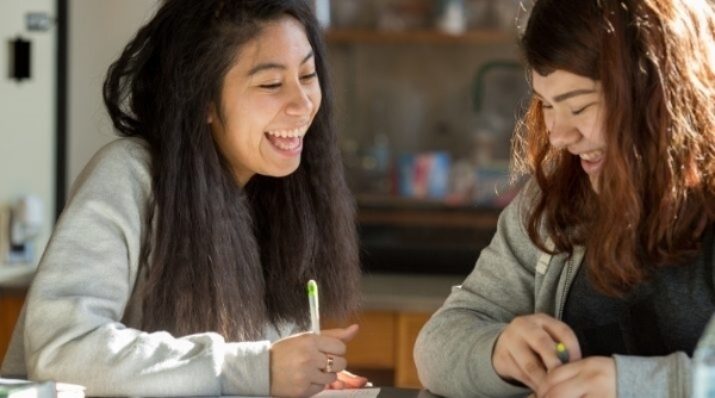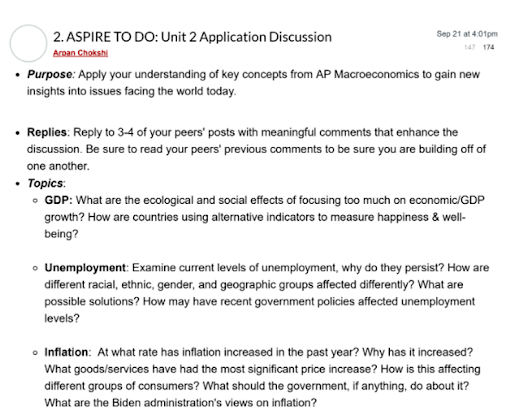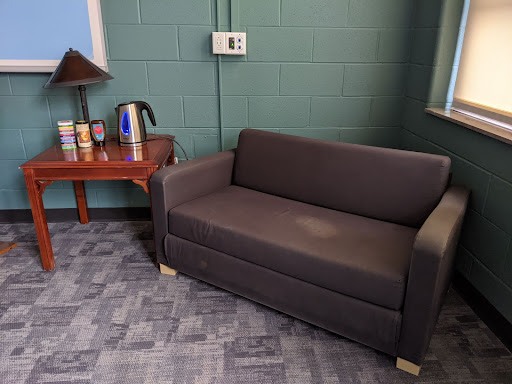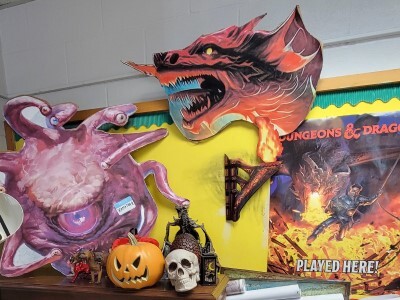5 Tips for Implementing a Student-Paced, Mastery-Based, Blended Classroom
Topics

We’ve all had the experience of truly purposeful, authentic learning and know how valuable it is. Educators are taking the best of what we know about learning, student support, effective instruction, and interpersonal skill-building to completely reimagine schools so that students experience that kind of purposeful learning all day, every day.
Teachers will continue to be frustrated that they can't meet the needs of all of their students until we reconsider the learning model in our schools.
The specific demands on teachers have often been hidden from the public eye. One side-effect of remote learning during COVID is that caregivers and community members have come to clearer terms on what we expect of teachers:
- Tend to students' social and emotional needs but cover all required content.
- Allow students to re-learn, revise, and re-submit but ensure no student gets too far behind.
- Slow down for students who need re-teaching but ensure advanced students don’t get bored.
- Differentiate lessons to students' needs but ensure all students achieve high standards.
- Create opportunities for students to make independent choices but ensure no one fails.
While teaching has always been a grueling profession, the list of well-intentioned but seemingly contradictory demands is growing.
Teaching is a lifelong journey, and I’m still trying to resolve many of these contradictions. However, one thing I know for certain is that a traditional, one-size-fits-most classroom does not rise to the needs of today’s students. This should be clear when we look at how even a highly motivated teacher can struggle within a traditional classroom.
The Traditional Classroom
In the conventional classroom, a teacher strives to deliver compelling lectures with witty anecdotes while peppering the class with questions to keep them engaged. The teacher notices some students take copious notes while others politely nod with blank looks on their faces. After listening to a lecture and doing a couple of practice problems as a class, the teacher releases the students to complete additional activities with their partners. Some fly through the problem set and are bored as they wait for the next steps, while some of their peers struggle to finish half of the exercise. The teacher quickly circulates about the room, trying to meet the needs of all learners by re-teaching the concepts to students who struggle.
About two-thirds of the students are ready to go home and try more challenging questions independently. The other third don’t complete their homework because they didn’t grasp the foundational concepts from the lecture, don’t have the necessary support at home, or have other obligations outside of school.
The students who missed class today will be adrift when they return. They will try to piece together what they missed by borrowing classmates’ notes or, if the teacher has time, meeting with them before or after school to repeat the lecture.
The teacher tries to find solace in the fact that they met the needs of most of their students by “teaching to the middle.” However, they’re frustrated that they couldn’t meet the needs of their highest achieving or highest-needs students.
The Modern Classroom
Unless we reconsider the fundamental format of our classrooms, teachers will continue to feel dejected and be unable to meet students' needs despite their best intentions. The decline in a feeling of efficacy and increase in teacher burnout will exacerbate the pending teacher shortage.
What if there was a better way? What if there was an alternative model in which students reported:
This class… | % of Students Who Agreed or Strongly Agreed with the Statement |
has helped me learn challenging content and skills independently | 97% |
allows me to learn at my own pace based on my current level of understanding | 95% |
allows me to easily catch up if I miss class | 92% |
allows for more one-on-one time with my teacher | 92% |
creates more opportunities to collaborate with peers (partners, small group, etc.) | 92% |
has helped me build a closer relationship with my teacher | 81% |
helps me learn more than a traditional lecture-based class | 73% |
This is what students in my AP Macroeconomics class reported a few months into a self-paced, mastery-based, blended course inspired by the Modern Classrooms Project (MCP). Similar results can be seen across a range of schools and subject areas.
What does this type of modern classroom look like?
As we start class, students glance at the spreadsheet at the front of the room showing their progress in the unit, set a goal for what they plan to accomplish in class, and identify students they can partner with who are at a similar place in the unit. A handful of students decide they need to review content, so they watch a video lesson on EdPuzzle. Another group of students is ready to discuss the workbook pages they completed last night using a group protocol to debate the correct approach to solving various problems.
This lesson is an example of an EdPuzzle video with checks for understanding embedded in it.
The teacher is in the corner of the room with a large whiteboard reviewing graphs from the previous two lessons with students who felt they needed more review. Another handful of students already demonstrated mastery of the lesson’s learning targets, so they decided to listen to a podcast and post their stance on proposed economic policies on a discussion board.
My first deep dive into the Modern Classroom Project was their free course which helped me learn how to:
- Use students’ learning readiness to drive the pace of learning
- Create more time for me to meet with individuals and groups of students throughout the class period
- Ensure every student has the opportunity to demonstrate mastery of essential learning objectives
Tips for Implementation
If you are ready to transition to a self-paced, mastery-based, blended class, here are a few tips:
- Start Small: If you find it daunting to convert an entire course’s curriculum into a modern classroom format—don’t. Instead, start with a few lessons or a single unit. Some aspects of your curriculum (e.g., projects, online quests, etc.) may already allow students to work at their own pace, so those lessons are a great launching point. There certainly is an upfront investment to creating videos, so it’s best to start small and experiment. However, front-loading your preparation will mean significantly less planning day-to-day. Also, you will be freed up in class to help students and give feedback during class, which means less grading at home.
- Clarify and Prioritize: Take the time upfront to clarify which objectives all students must achieve and the type and level of evidence that would sufficiently demonstrate mastery of those objectives. Too often, we feel that students should have learned a new concept simply because we said it in a lecture or it was in assigned reading. However, veteran teachers know that couldn’t be further from the truth. By having clear criteria on what mastery looks like and which objectives and activities are truly required, we can be laser-focused on how to help all students master the most critical components of our courses. For example, the majority of the curriculum for AP courses will consist of required activities that are carefully aligned to key College Board learning objectives. While this helps ensure the maximum number of students master the required content and skills to earn college credit it doesn’t preclude students who have mastered the fundamentals to apply their learning toreal-world concepts that are unlikely to appear directly on the AP exam.

This example of a discussion board activity encourages students to make real-world connections.
- Use Classtime for Connections: Plan how you best leverage your role in the classroom. When your primary function during class is no longer to deliver content, you will have more time to do what you do best—connect with individual students, provide feedback, re-teach, or enrich learning. For example, my students remarked that the flexibility of the class and increased time working in “small groups definitely held me accountable for knowing the material and working through it progressively.” Other students appreciated “the mini breakouts where we got to do a few workbook pages” with me ”because they received immediate feedback” and it made “it easier to ask clarifying questions.”

Our classroom’s collaboration corner.
- Embrace Mistakes: We all stumble the first time we try something—or even the second, third, or twentieth time. When I took my first plunge into blended learning, I felt too self-conscious to record my own videos. I felt that my lectures would pale compared to other more polished videos on YouTube. However, after recording my first couple of videos, my students encouraged me to keep going because they found my explanations more helpful than slickly produced professional videos. I realized that, similar to how I might occasionally stumble during a live, in-person lecture, it is okay if my recorded lectures aren’t flawless. Allowing myself to make mistakes, I was able to show I’m human and model the growth mindset I want my students to develop. One student, initially skeptical of the blended format, said, “The Edpuzzle explanations were more helpful than I thought they'd be.” The videos helped him learn better because he noticed that they “force you to learn, rather than passive lecture listening.”
- Trust Your Expertise: Soliciting student feedback is essential for teachers to improve learning continually; however, sometimes, you have to take feedback with a grain of salt. For example, while research clearly shows the benefits of interactive learning, many students still feel they learn more from passively listening to a teacher. So, we have to trust our expertise and persist with changes in our pedagogy even if all of our students don’t immediately embrace them. One student admitted, “I think a lot of the note-taking was maybe a little annoying at the beginning, but I feel like those actually helped a lot…writing notes helped make those concepts stick in my head far better.”

This is an example of the learning targets and note guide we use in class.
A few months into the course, another student came to the same realization: “I like the note packet because I can take my own notes, but it has a focus that helps me pay special attention to specific things.” In other words, although students might say they would rather hear you lecture or they don’t think taking notes helps, we have to explain why we’re making the pedagogical decisions we’re making and have the patience for those decisions to bear fruit.
Photo at top by Allison Shelley/The Verbatim Agency for EDUimages, CC BY-NC 4.0




